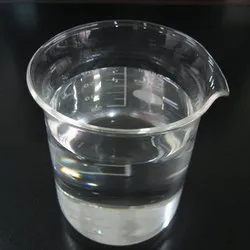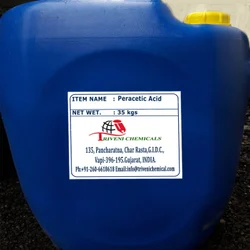Introduction to Peracetic Acid 20% Grade
Peracetic acid (PAA) is a powerful oxidizing agent commonly used in various industries for its antimicrobial and disinfectant properties. At a concentration of 20%, peracetic acid is highly effective for sanitation purposes in the food, beverage, healthcare, and water treatment sectors. This guide provides an in-depth look at peracetic acid’s applications, benefits, safety measures, and best practices for handling.


Peracetic acid’s popularity stems from its ability to kill a broad spectrum of microorganisms, including bacteria, fungi, and viruses, making it an ideal choice for industries that require stringent hygiene standards. It is biodegradable and breaks down into harmless by-products (acetic acid, water, and oxygen), making it environmentally friendly. Peracetic Acid for water treatment
Key Features and Properties of Peracetic Acid 20%
- Antimicrobial Efficacy: Peracetic acid is recognized for its strong biocidal activity. It is effective at eliminating harmful microorganisms, which makes it suitable for applications ranging from surface disinfection to water treatment.
- Environmental Benefits: One of the major advantages of using PAA is its eco-friendly nature. When it decomposes, it forms water, oxygen, and acetic acid, substances that pose minimal risk to the environment.
- Broad Applications: PAA’s versatility allows it to be used in a wide range of settings, including healthcare facilities for sterilizing medical instruments, the food industry for cleaning equipment, and wastewater treatment plants for disinfection.
Applications of Peracetic Acid 20%
- Food and Beverage Industry: In food processing, peracetic acid is used for sanitizing equipment, conveyor belts, and packaging materials. It ensures that harmful bacteria such as E. coli and Salmonella are effectively eliminated, reducing the risk of contamination.
- Healthcare Industry: PAA is widely used in healthcare for sterilizing medical instruments, endoscopes, and surgical tools. Its non-toxic decomposition makes it ideal for use in critical environments where safety and cleanliness are paramount.
- Water Treatment: As a disinfectant, peracetic acid is used to purify water in wastewater treatment facilities. It is also used in cooling towers to prevent the growth of biofilm and other microbial contaminants.
- Agriculture: Peracetic acid is often employed in agricultural settings, particularly in the sanitization of irrigation systems and tools to prevent the spread of plant pathogens.
Benefits of Using Peracetic Acid 20%
- Fast Action: PAA works quickly to kill microorganisms, making it ideal for high-demand environments where time is of the essence, such as hospitals and food processing facilities.
- Reduced Chemical Residues: Peracetic acid breaks down into acetic acid, water, and oxygen, leaving no harmful residues. This characteristic makes it preferable for applications that require minimal chemical interference, especially in the food and beverage industry.
- Non-Corrosive to Stainless Steel: Unlike some disinfectants, peracetic acid is less likely to corrode stainless steel surfaces, making it suitable for use in industrial equipment.
Safety Considerations and Handling
While peracetic acid is a highly effective disinfectant, it must be handled with care due to its corrosive nature, especially at higher concentrations. Here are some key safety guidelines:
- Personal Protective Equipment (PPE): Always wear appropriate PPE, including gloves, goggles, and protective clothing when handling PAA to prevent skin and eye irritation.
- Ventilation: Use in well-ventilated areas or employ local exhaust systems to minimize the risk of inhaling vapors.
- Storage: Store peracetic acid in cool, dry areas away from direct sunlight, heat sources, and incompatible materials such as strong alkalis or reducing agents.
- Spill Response: In the event of a spill, neutralize the acid using a suitable neutralizing agent and ensure that the area is well-ventilated before cleaning.
FAQs about Peracetic Acid 20%
Q1: Can Peracetic Acid be used on all surfaces?
PAA is compatible with many materials, including stainless steel and certain plastics, but it can be corrosive to other surfaces, particularly certain metals and rubber. Always check manufacturer recommendations for specific material compatibility.
Q2: How does Peracetic Acid compare to Hydrogen Peroxide?
Peracetic acid is often compared to hydrogen peroxide, another common disinfectant. While both are strong oxidizers, peracetic acid tends to work more quickly and is more effective at killing a wider range of microorganisms. However, hydrogen peroxide may be preferred in environments where odor is a concern, as peracetic acid has a strong, vinegar-like smell.
Q3: What are the risks of using Peracetic Acid?
While peracetic acid is highly effective as a disinfectant, it poses risks if mishandled. Exposure to high concentrations can result in skin burns, respiratory irritation, and eye damage. Always follow safety protocols to minimize risks.
Reviews from Industry Professionals
Dr. Sarah Evans, Microbiologist:
“Peracetic acid has proven to be a game-changer in microbial control, especially in high-risk environments like hospitals and food processing plants. Its quick action and non-toxic by-products make it a superior alternative to chlorine-based disinfectants.”
Michael Davis, Food Safety Consultant:
“In the food industry, PAA has become indispensable. It not only provides thorough sanitization but also complies with stringent safety regulations, making it our go-to product for ensuring equipment cleanliness.”
Conclusion: Why Choose Peracetic Acid 20% Grade?
Peracetic acid 20% is a high-performing disinfectant and sanitizer for industrial, healthcare, and agricultural applications. Its powerful antimicrobial action, eco-friendly nature, and compatibility with various materials make it the ideal choice for those needing reliable, fast-acting sanitation solutions. When handled correctly, PAA cleaner ensures a safer, cleaner environment without leaving harmful residues.
